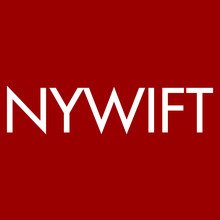Industrial Business Zones | Where We Are Today - Part 3
/In 2006, New York City created 21 Industrial Business Zones (IBZs) to support manufacturing and the important living-wage jobs that they offer. These 21 “safe havens” provide a relocation tax credit of $1,000 per employee and up to $100,000 to industrial and manufacturing firms choosing to move into IBZs.
As we have explored in parts one and two of this series, the jobs and tax revenue generated by manufacturing are incredibly valuable to the communities where they are located.
According to the City, in the second quarter of 2023 alone, manufacturing accounted for 2.1 billion dollars in taxable sales. And, as we noted in part one of this series, the average entry-level annual salary for manufacturing jobs in New York City is $62,851, according to Zip Recruiter. Moreover, these jobs provide generous healthcare benefits, have union protections, and are open to workers without college degrees.
New York City manufacturing jobs numbered just under 56,800 in December 2023, down from roughly 172,000 in 2000. At the peak in 1947, more than a million New Yorkers worked in factories.
We all know space is limited and at a premium in New York City. “I think that the real estate costs certainly do contribute to the challenges for manufacturing,” said Jonathan Bowles, executive director of the Center for an Urban Future. This group studies pathways to middle-income jobs.
Manufacturing is still mainly happening at the same locations as a half-century ago after the 1961 Zoning Resolution designated a series of manufacturing districts to locate industrial work. According to the City, a series of rezonings of manufacturing space for commercial, residential, and mixed uses in the early 2000s and 2010s reduced manufacturing districts by just over 5%.
“There are all these kinds of cracks in the protective walls around manufacturing,” said Brian Coleman, CEO of the Greenpoint Manufacturing and Design Center, a nonprofit industrial developer.
James Parrott, director of economic and fiscal policies at the Center for New York City Affairs at The New School, said the City has long been driven by a principle of “highest and best use” for real estate based on what will fetch the highest price. He said, “To me, highest and best use ignores the kind of economic activity that’s needed to have more equitable – economically and racially equitable – economic growth in New York City.”
The communities where Broadway Stages operate all host IBZs, and we have seen firsthand the value that IBZs bring to the local community. Together with our clients, Broadway Stages has generated employment for thousands and created innumerable jobs. Moreover, we support local manufacturers by working primarily with local businesses and in-house teams for our production needs, and our clients do the same when practical.
The IBZs provide equitable, accessible jobs and support the companies that create them. In turn, many of those people live and shop in those same communities. Ultimately, everyone benefits from the City’s investment in the Industrial Business Zones and manufacturing in general.
It is critical that the IBZs are protected and that industrial preservation policies are adopted to preserve industrial uses in urban centers. The various companies that have invested in the IBZs have been responsible for helping to create desirable neighborhoods.
In our next blog in this series we will look at those investments and how they have changed the face of communities across the City.




